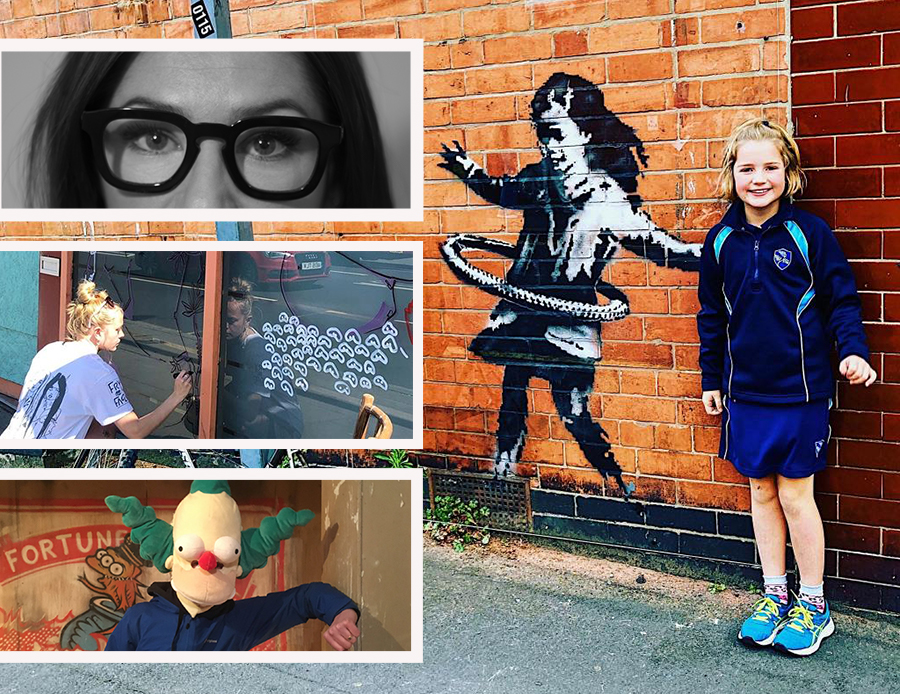Banksy’s mysterious return on the walls of Nottingham lifted spirits during lockdown, brought people hope and started a controversial debate in the street art community. Olimpia Zagnat meets three urban painters who are opening up about their challenges as ‘front-workers of people’s hearts’ amid covid pandemic.
It was after Banksy has elucidated the case with a post on his official Instagram page when people rushed over to the mural wall in Lenton on Saturday morning, October 17.
However, this started a debate in the graffiti community, where every artist – apart from Banksy – has to comply with strict rules when it comes to street painting.
Nottingham mural creatives decided to come forward and speak about the real struggles that an artist of Banksy’s ‘calibre’ would never come encounter.
“Banksy is boring”
One of the most popular urban graffiti designers in Nottingham is a 29-year-old artist known in the community as ‘Fry Face’.
Despite her passion for street art, hip hop music and skateboarding, she is far away from making a living out of her passion.

She’s been working as a florist for many years, and has recently started an electrician course at New College in Beeston.
“I’d rather do a job that gives me financial stability and then do art in my free time”, she said.
“Otherwise I’d just get my creativity abilities hurt.”
The woman behind the Fry Face nickname thinks that artists’ needs are overlooked, hence her decision to keep graffiti as a passion.
“For me, Banksy’s mural has been an example of how ignorant people can be.
“In terms of technical ability, Banksy is boring”, she added.

“We know it’s him and people go insane over it which makes it more annoying.”
While the hula hoop girl graffiti got a lot of recognition from Nottingham community, street artists like Fry Face expressed their frustration towards this ‘double-standards’ approach.
“I have no problem in that being there”, she said.
“It’s just that for other artists it’s frustrating because we get penalised if we paint illegally, whereas his work gets framed and gets a plastic foil over it.”

“It is a bit of a piss-take.”
However, other voices from the graffiti community don’t contest Banksy’s merit, but they believe that more needs to be done to support street artists in Nottingham.
The ‘small town’ mentality
Nathan Bainbridge, 45, has been on the local graffiti scene for 20 years, painting walls and building a design business under his ‘street’ name – Kid 30.
He is a real connoisseur when it comes to urban art, and admits that Nottingham is “quite small” to big graffiti cities like London and Bristol.
“There’s a lot of artists in Nottingham, and some of them get recognition”, Nathan added.

“You would never get the recognition that you would if you were in Bristol, London, or Leicester
“Nottingham is quite small, so it has a town mentality.”
The artist behind the ‘Kid 30’ nickname recognises that the graffiti industry suffered some changes over the last years, and has now become a source of financial gain for big corporations.
“Street art is so big now – it’s the biggest art form in the world”, he said.

“Unfortunately there’s gonna be more association between corporations wanting to buy into the edginess of it.
“And I do commercial art, so I’m guilty of my own thing.”
There is a never-ending discussion about monetizing street art, and whether the public is ready to appreciate underground graffiti creatives as much as they do with mainstream mural painters like Banksy.
“I think that a lot of people need to go to an art gallery , where there’s a white wall and then be told what to look at and how to behave”, said Nathan.

“You pay your money, you go in and you look at a toilet and then you scratch your chin and you say it’s art because someone has told you it’s art.
“Whereas if it’s on the street, you’re viewing it in a different context and you have to decide whether you like it or not.”
“When do we start to look at all the art that it’s out there?”
She would describe herself to be more of a multi-practioner, rather than a graffiti-oriented artist.
Emily Catherine, 36, doesn’t have a street nickname, but shares the same passion for urban art and murals.

While she agrees that underground artists don’t get the same the same recognition as the mainstream does, Emily says that ‘occupying wide walls’ is like being a “part of people’s visual journey”.
“You’re part of peoples lives”, she said.
“Yes, if it you were in a gallery, you’d notice it because you were supposed to look at it.
“But that’s the beauty of street art, rather than the disappointment of it.”

The question remains the same.
What if there is a Banksy on our doorstep, whose art gets cleaned off because the world hasn’t discovered him yet?
“The shame of it is that people don’t have a right on what stays and what goes”, said Emily with disappointment.

“If someone really famous puts something up on the city council building, what are they gonna do about it?
“So when do we start to look at all the art that is out there?”
By Olimpia Zagnat
Featured image credit: Antonia Gardner


